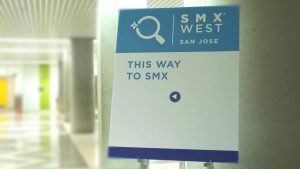At a time when brick-and-mortar retail stores are facing significant challenges, contributor Justin Freid suggests ways they could deploy new technologies to shore up their businesses.

Many large retail chains — such as Macy’s, Sears and J.C. Penney — have been struggling. Just this week, children’s clothing retailer Gymboree declared Chapter 11 bankruptcy and announced plans to close hundreds of its stores. Why is this happening? One factor fueling this retail trend is the rise in online shopping.
While the ease of making a few clicks on your mouse or swipes on your phone compared to traveling to a physical location is a large part of the equation, there is another marketing technology practice supporting the shift: personalization.
When shopping online, whether browsing on your mobile, going through emails or checking out your favorite blog on your laptop, the experience you have with ads and products is often dictated by your prior behavior. It is essentially a unique experience customized to you. But when you walk into a retail store, that is usually not the case.
But that doesn’t mean real-world retail stores are doomed. This situation has the potential to change. If beacons and other close-up digital communications technologies, such as Near Field Communications (NFC) and Bluetooth, are more widely adopted within retail, the same level of customization that customers feel online can be delivered in store.
What are beacons, Bluetooth and Near Field Communications?
Most of us of us are familiar with the close-up communication technology called Bluetooth. Whether is it on your phone or in your car, chances are you are using this technology as part of your everyday life.
Bluetooth comes in two different “flavors” — classic Bluetooth, whose most modern iterations can communicate across 240 meters in ideal conditions, and Bluetooth Low Energy (BLE), which works at 100 meters at most.
Bluetooth is currently used for things like streaming music to your headphones, taking a hands-free call on your cell phone or sending information back and forth from your smartphone to your smartwatch.
Meanwhile, Near Field Communication (NFC) is useful at even closer ranges — under 20 centimeters. It’s the technology behind services like Apple Pay, Android Pay and Samsung Pay. NFC isn’t nearly as widely employed as Bluetooth, in part because it’s only recently been widely incorporated into smartphones. It could potentially be used for things like electronic tickets or distributing information from posters, where users would place their phones or other NFC devices in close range of an NFC tag, enabling the exchange of information.
Beacons — in the retail setting — are at the other end of the conversation, the retailer or marketer end. They are physical devices that transmit data to and from other devices through Bluetooth. They transmit a signal to these other devices constantly. The NFC equivalent here is usually called a tag, or it could be a payment point.
How can a beacon create a customized experience?
Let’s look at a few different scenarios to understand how this technology can provide customized experiences across multiple verticals.
Retail
As a frequent shopper at Old Navy, you happen to have downloaded their app and occasionally browse their available clothing through the app. You recently received a promo email showcasing a sale on men’s t-shirts. Through these interactions, Old Navy knows you are an app user and are interested in t-shirts for men. Depending on their privacy statement, they may know even more about you.
Beacons would allow Old Navy to customize the experience you have when you walk in the door with your smartphone that has its location technology enabled. By placing the beacon technology within the store, your online browsing behavior can be used to craft a custom experience for you.
Old Navy could choose to send you a coupon through a push notification on your phone to help facilitate the purchase of something you looked at recently, such as those t-shirts. For example, they could let you know where the t-shirts are located within that specific store. And if you happen to be unable to find your size in store, you could simply open your app and purchase online with the same discount code.
Health
Wearables and fitness trackers continue to be a great way to keep track of your physical fitness and activity levels. They also provide an opportunity to streamline the experience you have at the doctor’s office. Depending on the condition you are being treated for, a doctor could potentially benefit from knowing how active you are, what your sleep schedule is and other variables that are collected through wearables.
With wearable technology now beginning to do things like tracking heart rates and even testing blood sugar, this information could be fed directly to a doctor’s electronic health record (EHR) system, where he/she can analyze the data.
This can decrease the amount of time the patient spends in the office, but most importantly, it can free up the doctor to spend more time with patients, making treatment decisions. It also provides the doctor and other healthcare professionals more data to help with the treatment of the patient.
Hospitality/service industry
How much would your user experience improve after a long day of travel if you could easily check into a hotel without even needing to speak to someone?
Here’s how it could happen if the right technology was deployed. As you walk in, your phone connects to a beacon, your information is passed, and your electronic key and room number are readily available. Without hesitation, you are off to your room, where you scan your phone at the door to open it. Meanwhile, your credit card information is passed to the hotel for those lovely incidentals.
How do these technologies benefit companies?
There are many ways companies that invest and implement this technology will benefit. Let’s examine a couple of the top reasons:
Advanced customer analytics
Being able to connect online and offline purchasing behavior has been a struggle within the industry for quite some time. But progress is now being made.
Google has invested significantly in being able to track offline conversions, and these technologies allow you to do it seamlessly. One user ID across online and offline will allow companies to examine the most common and most efficiently utilized purchase paths, optimizing their offline and online sales processes and unifying them into a single continuous process.
Decrease in labor costs
One of the largest investments companies make is in their talent. By replacing some of the human interaction involved in the in-store purchasing process with electronic communication, stores won’t need to have as many staffers on duty. These mobile technologies can answer questions, provide comparative information and serve other functions that a clerk usually would.
Of course, there is an initial cost to implementing the technology, but depending on pricing, those costs could be made up over time with the money saved by reducing staffing.
More efficient media budgets
At times, optimizations and recommendations that cross online and offline purchase paths are made based on data that is not statistically significant. That’s not because of negligence, but because that data can be scarce or inaccurate.
Making more data available to analyze can help improve the overall purchase path, decreasing wasted spend on media channels that may not be doing what brands hoped for.
What is preventing this from becoming mainstream?
Companies will only invest in new technology when it can be useful at scale. It most likely is not worth it for a mom-and-pop grocery store to invest in technology like this. Meanwhile, for large retailers, healthcare providers and hotel chains, the cost to implement it would be significant.
But, as we have seen with the taxi/ride-share space or cable industry, sometimes drastic changes to the marketplace can be extremely fruitful for those who take the risk.
Some opinions expressed in this article may be those of a guest author and not necessarily Marketing Land. Staff authors are listed here.
Marketing Land – Internet Marketing News, Strategies & Tips
(46)
Report Post



